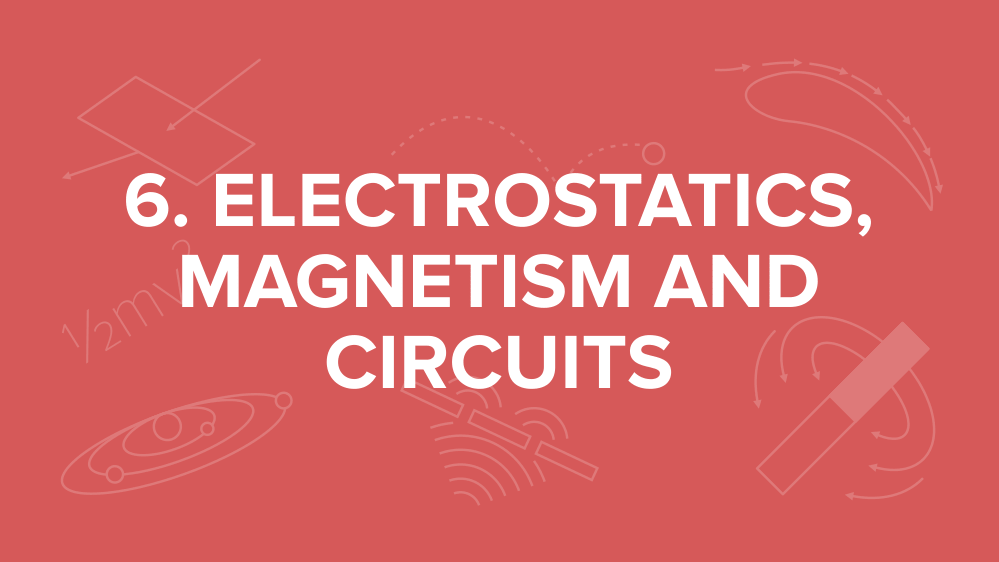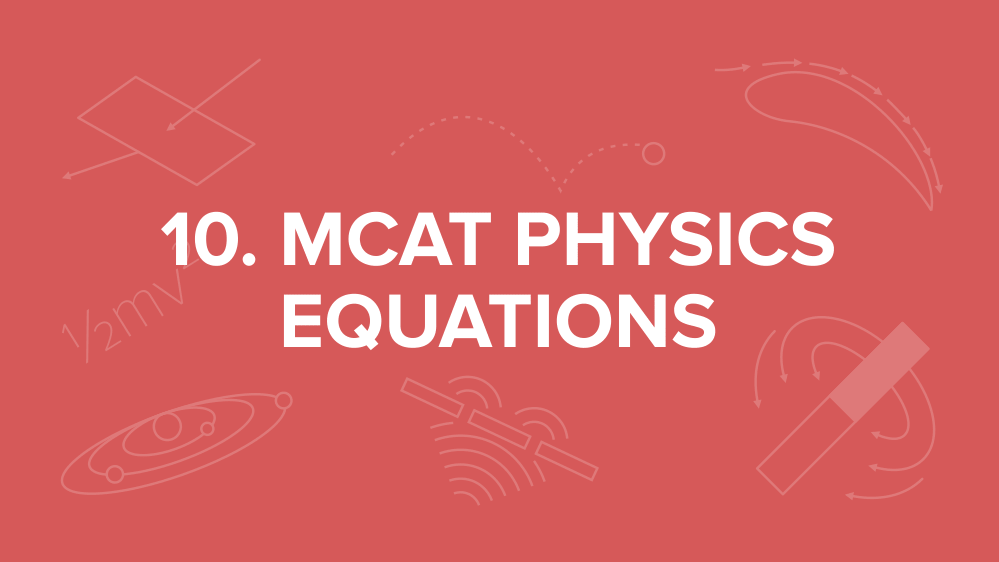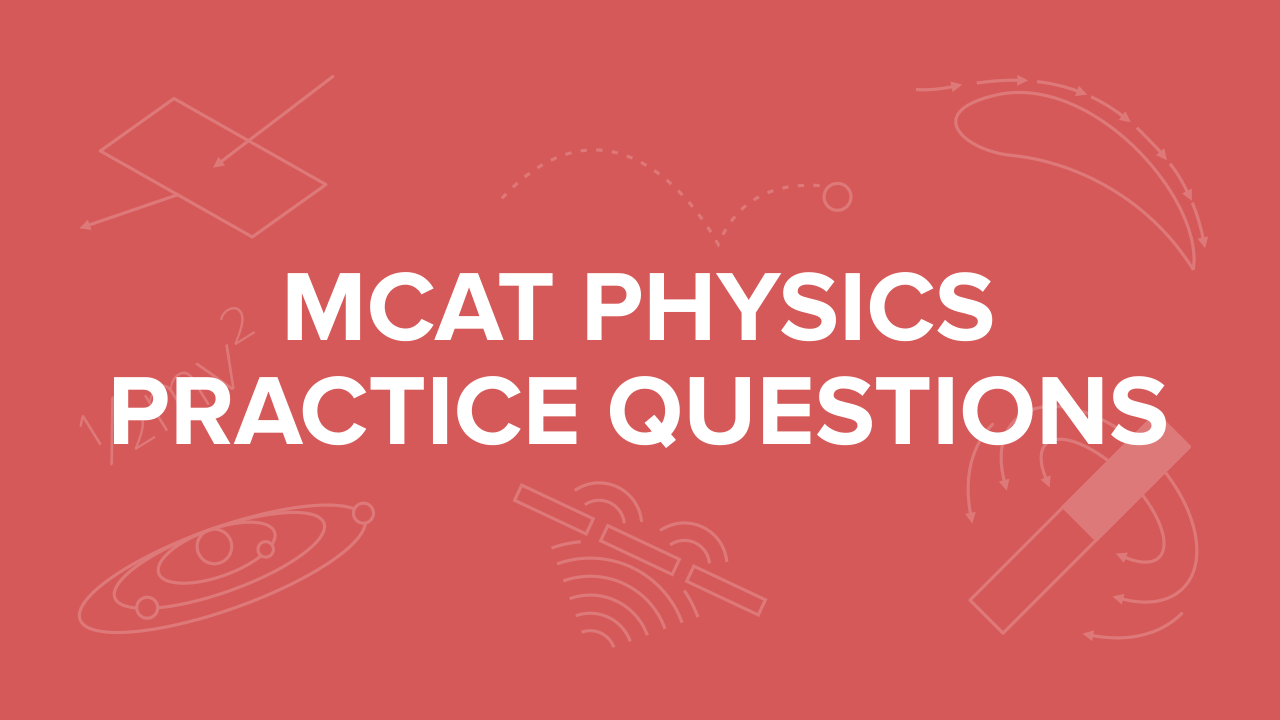Physical Address
The four answer choices for our problem are now:
Chemical and Physical Foundations of Biological Systems Section: Overview
The Chemical and Physical Foundations of Biological Systems section asks you to solve problems by combining your knowledge of chemical and physical foundational concepts with your scientific inquiry and reasoning skills. This section tests your understanding of the mechanical, physical, and biochemical functions of human tissues, organs, and organ systems. It also tests your knowledge of the basic chemical and physical principles that underlie the mechanisms operating in the human body and your ability to reason about and apply your understanding of these basic chemical and physical principles to living systems.
This section is designed to:
- test introductory-level biology, organic and inorganic chemistry, and physics concepts;
- test biochemistry concepts at the level taught in many colleges and universities in first-semester biochemistry courses;
- test molecular biology topics at the level taught in many colleges and universities in introductory biology sequences and first-semester biochemistry courses;
- test basic research methods and statistics concepts described by many baccalaureate faculty as important to success in introductory science courses; and
- require you to demonstrate your scientific inquiry and reasoning, research methods, and statistics skills as applied to the natural sciences.
During the actual exam, you will have access to the periodic table while answering questions in this section of the exam.
Exam content will draw from*:
Discipline:
- First-semester biochemistry, 25%
- Introductory biology, 5%
- General chemistry, 30%
- Organic chemistry, 15%
- Introductory physics, 25%
Foundational Concept:
Scientific Inquiry and Reasoning Skill:
* These percentages have been approximated to the nearest 5% and will vary from one test to another for a variety of reasons. These reasons include, but are not limited to, controlling for question difficulty, using groups of questions that depend on a single passage, and using unscored field-test questions on each test form.
MCAT Physics: Everything You Need to Know
The topics you need to know to ace MCAT physics questions, plus strategies to help you maximize your MCAT Chem/Phys score

Part 1: Introduction
Part 2: The MCAT physics content you need to know
Part 3: MCAT physics study strategies
Part 4: MCAT physics practice problems
Part 1: Introduction
The MCAT covers many different topics: biology, biochemistry, physics, general chemistry, organic chemistry, critical reading, sociology, and psychology. How can you study for that many subjects at one time? In addition to building a strong MCAT study schedule, you need to follow the age-old wisdom of “study smarter, not harder,” especially when we all know how important it is to achieve a good MCAT score.
How exactly can you study smarter for the MCAT? By understand the topics that are high-yield and focusing your time and energy on these areas to squeeze the most points out of your exam come test day. Conversely, don’t sink your valuable time into topics that are less likely to show up on the exam. Instead, let questions you miss on low-yield topics help focus your content review on what you need to study.
Similar to MCAT organic chemistry, MCAT physics does not show up on the exam as much as biochemistry. Physics will represent somewhere between 20-30 percent of your MCAT Chem/Phys section, which is one of four MCAT sections. Hence, you can expect to see 12 to 18 physics questions (out of 230 total questions) on the entire MCAT—about 5 to 8 percent of the exam.
Given how valuable your study time is, we’ll highlight the highest-yield MCAT physics topics in our physics content guides. In this resource, we provide all of the content you need to know to answer MCAT physics questions, in addition to study strategies that will help you maximize your Chem/Phys score. Let’s get started!
Part 2: The MCAT physics content you need to know
Note: Clicking on any of these thumbnails will take you to a comprehensive guide on that topic.











Part 3: MCAT physics study strategies
In this section of the guide, we will present three high-yield study strategies you can use to handle MCAT general chemistry questions.
MCAT Physics Tip #1: Know the big formulas and their units.
Like many students, terms such as “work” or “force” ring a bell in your head, but you may not have the formulas on the tip of your tongue. However, just as it is essential on the MCAT to know your amino acids backwards and forwards, “big formulas” like the work or force formulas are no exception.
What do we mean by “big formulas”? We define a big formula for the MCAT as any formula you see on an AAMC practice question, whether it comes from the question packs or one of the five AAMC full-length exams. If a formula shows up on AAMC practice questions, it is fair game for your actual exam. You can also extend this definition to practice questions you take from test prep companies. If it shows up on an exam or practice problem, it is a big formula!
How does this strategy help us? Let’s look at a practice question: “How much work is done when a protein is extended by 5 nm using 50 pN of force?” If we know that the formula for work is work equals force times distance, we can solve this question by simply multiplying 5 nanometers by 50 picoNewtons.
A lot of students tend to panic when asked physics questions in a biologic context. We are much more used to seeing the following question: “How much work is done when a student moves a block 5 meters using 50 N of force?” Remember, the formulas you are using here are the exact same!
The multiplication from our original problem, 5 nanometers by 50 picoNewtons brings us to another point that students often struggle with. How do we multiply 5 x 10 -9 by 50 x 10 -12 ? MCAT math is tricky, but it is manageable. You are not allowed to use a calculator on the exam and the AAMC knows this. Let’s look at our next MCAT physics tip:
MCAT Physics Tip #2: Let the answer choices guide your approach on math problems.
Let’s say the four answer choices for our problem are:
A) 1.50 x 10 -18 J
B) 2.50 x 10 -19 J
C) 2.55 x 10 -20 J
D) 5.50 x 10 -21 J
At first glance, those tricky answer choices appear similar, but let’s take an even closer look. Let’s say we simplified our math by removing the scientific notation, So, we go from 5 x 10 -9 times 50 x 10 -12 to 5 times 50. That’s easy, right? We know it is 250. Now, let’s simply the answer choices by removing the scientific notation.
The four answer choices for our problem are now:
Which answer choice is most similar to 250? If you said answer choice B, you would be correct. It does not matter where we place the decimal—anytime we multiply 5 by 50, we will get a number that looks similar to 250, but not 150 (choice A), 255 (choice C), or 550 (choice D). Without even looking at the scientific notation, we were able to determine the correct answer.
Let’s say, however, the answer choices for our problem looked like this:
A) 250 x 10 -18 J
B) 250 x 10 -19 J
C) 250 x 10 -20 J
D) 250 x 10 -21 J
Now, we do care about the scientific notation. How do we multiply 5 x 10 -9 by 50 x 10 -12 ? Use this tip: think of solving the multiplication of these numbers as a two-part process. First, multiply the numbers before the scientific notation. When we multiply 5 by 50, we get 250. Second, add the exponent values, which are -9 and -12 in this case. There is no need to fear this math equation either: if we add two negative numbers together, we get an even bigger negative number. -9+(-12) is the same as -9-12, or -21. When we piece together step 1, which was 250, and step 2, which was -21, we arrive at answer choice D: 250 x 10 -21 .
MCAT Physics Tip #3: Use the TAID P approach to analyze figures, graphs, and tables.
The TAID P approach stands for title, axes, independent and dependent variables, and patterns. By analyzing these five components of a figure, you are well on your way to understanding the experiment. For example, let’s say you receive the following graph on an MCAT physics passage:
![Mcat Physics [A] versus time for a first-order reaction.](https://images.squarespace-cdn.com/content/v1/5269fbd3e4b0eb2b76ccc1db/1597350989802-SJMOTCPCE7NAW5YU081Z/first-order-reaction-mcat-physics.png)
T (title): What does the title tell us? Importantly, the title tells us that we are looking at a first-order reaction, or a reaction in which the reaction rate only depends on the concentration of a single reactant.
A (axes): The x-axis tracks the time of the reaction in seconds. The y-axis measures the concentration of reactant A in moles/liter, which is also known as molarity.
I/D (independent/dependent variables): Since the x-axis always contains the independent variable, we know that the independent variable in this experiment is time. As such, the y-axis contains the dependent variable, which is the concentration of reactant A in this case.
P (patterns): What happens to the concentration of reactant A as time passes? Over time, the concentration of reactant A decreases according to the graph. Furthermore, we see that the concentration of reactant A appears to decrease more quickly at the beginning and less quickly as time passes. For example, compare the drop in [A] between 0 and 5 seconds and between 15 and 20 seconds. The rate at which [A] decreases slows over time.
You should aim to identify the TAID P elements for any given figure within 15-20 seconds. The goal is to understand the big picture without getting lost in the small details. If you find yourself spending more than 15-20 seconds, finish your current thought and move on.
You shouldn’t spend too much time on any given figure during your first reading of the passage because there may not even be a question on that figure! For example, if an MCAT chemistry passage has two figures and a table, the test writers may only ask a question about the table, meaning you didn’t even need to understand the figures in the first place.
Importantly, however, after you finish taking a passage, you should apply the TAID P method to all figures that you encountered, even if the passage didn’t ask a question on them. By doing this, you will become quicker and more confident at analyzing many types of figures. Over time, there will be very little that the test writers can give you that you haven’t seen before!
MCAT Physics Tip #4. Use the units to your advantage.
Let’s say you receive an MCAT problem asking you to obtain power, and you know two values: speed and force. At first glance and after checking MCAT physics tip #1, you can’t think of a formula that relates these terms. Many students would panic, but now is the time for MCAT physics tip #4 to kick in.
Let’s break down the units that we do have. Power is equal to Work/time, and the units are Joules/second. We know that the equation for Work is Force*distance, and force is represented by Newtons while distance is represented by meters. So, let’s replace Joules with Newtons * meters as shown below.
P = Work / time P = Joules / seconds
Work = Force * distance W = Newtons * meters
P = (Force * distance) / time P = (Newtons * meters) / seconds
Using MCAT physics tip #4, we were able to relate the units of speed (meters/second) with force (Newtons) in the power equation. We are now well on our way to solving our problem!
MCAT Physics Tip #5. Use formulas to show you relationships that help answer non-math questions.
Let’s look at the following equation:
At which of the following locations in the body is hydrostatic pressure the greatest if a student is standing up?
Using MCAT physics tip #1, we should recall the formula for hydrostatic pressure. Even though no numbers are used in this problem, we can use the formula to our advantage.
Hydrostatic pressure is the pressure in a given liquid at a certain depth. The formula is P = density * gravity * depth/height, or P = dgh. D is often notated by rho, or a tilted p. How does this equation relate back to our situation? Let’s think of the student as a container of blood with the student’s head being the top of this container and the student’s feet being the bottom of this container.

Now, back to our formula P = dgh. Since the fluid density and gravity will be the same in this student’s case, the only variable we can alter is depth. If we define the top of the container as height 0, where is the deepest part of the container? Is the container deepest where it corresponds to the student’s head, hands, knees, or feet? If you said feet, then you are correct! Pressure (P) and depth (h) are directly proportional according to our formula. So, when depth is the greatest, pressure will also be the greatest and you will choose “feet” as your answer.
The two main variable relationships you should be familiar with are directly proportional and inversely proportional. A direct relationship means that one variable will increase with the other and looks like this: x = y. When y increases, so must x. A inverse relationship means that if one variable increases, the other must decreases. You might draw it like this: x = 1/y. When y increases, x decreases.









